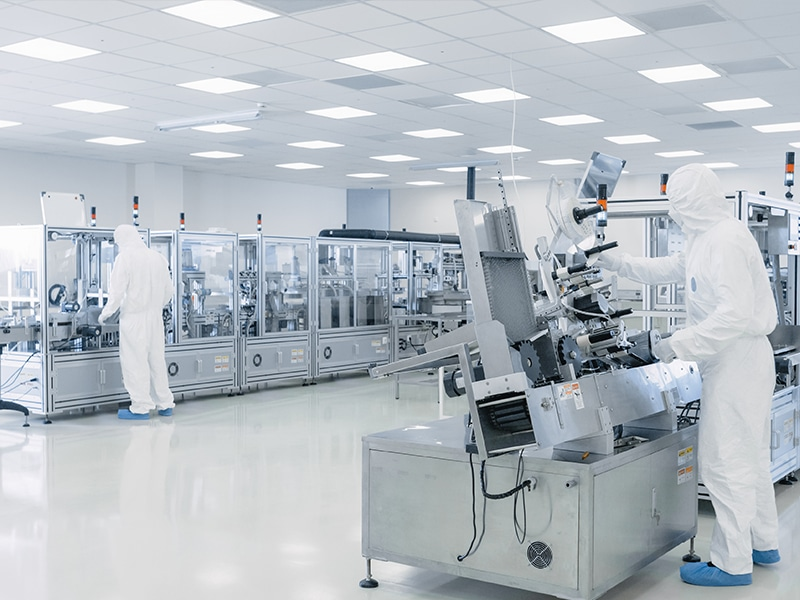Əlaqədar İlac Mərkəzləri və Biyoanalitik Laboratoriyalarında tapılan qazlar
Farmasiya və ya tibbi laboratoriyada müxtəlif gəz növləri tapıla bilir. Bir çoxu yaxud mazə, rəng, yaxud xüsusi bir tişinə malik deyil, bu da gəz sızıntısı olub-olmadığını anlamaq çətin edir. Silindirdən və ya sabit borlu gəz sistemindən gəz sızıntısı laboratoriya ortamında potensial olaraq fatal hadisə və ya tehlike yarada bilər.
Farmasiya sahəsi dünyanın ən sürətli inkişaf edən sahələrindən biridir. Bu sahə tərəfindən yaradılan satış daxićinin əksəriyyəti yeni məhsulların araşdırılması və inkişaf etdirilməsi sahəsinə yenidən invest edilir. Araşdırma və inkişaf processində müxtəlif spesial gəzlər və texnikalar istifadə edilir. Gas kromatografları, sıvı kromatograflar və spektrometrler kimi analitik alətlər uyğun səviyyədə gəz təchizatına malik olmaqla effektiv işləyirlər.
Bu farmasevtik və tibbi gəzlər, tibb, farmasevtik istehsalat və biotexnologiya sənayələri üçün xüsusi olaraq istehsal edilir. Onlar, insan sağlamlığına kömək edən prosesləri və məhsulları sintez etmək, steril etmək və ya izolasiya etmək üçün ümumiyyətlə istifadə olunur.
Farmasevtik gəzlər həmçinin "gəz terapiyası" adlanan texnikada xəstələr tərəfindən nəfəs alınır. İnsan sağlamlığı üçün istifadə edilən gəzlər, insan fiziologiyasını zədəlməməsi üçün qanunvericilik və sənaye standartları tərəfindən səslənmiş şəkildə nəzarət altında tutulur.
Laboratoriyada tapılan gəzlər
هلیوم
Helium (He) çox hafif, tişinələrsiz və tadı olmayan bir gazdır. Bundan əlavə, 6 növbəli qazlardan (helium, neon, argon, kripton, ksenton və radon) biridir, bu isə onların digər elementlərlə reaksiya etməməsindən və buna görə də başqa atomlarla mürəkkəb maddələr formasına gəlməməsindən gəlir. Bu ona güclü təhlükəsizlik profili verir və çoxlu tətbiqlərdə istifadə edilməsi mümkündür. Onların reaktivsiz statusu səbəbindən helium laboratoriyalarda nəqliyyat qazı kimi istifadə olunur. Balonları dolmaqdan əlavə heliumün farmasiya və biotexnologiya sektorunda də qiymətləndirilən rolu var. Laboratoriyada en çox MRİ maşınlarının daxilindəki magnitləri soğutmaq üçün istifadə olunur, lakin o, tibbi sahələrdə geniş diapazon üzərində də istifadə olunur, buna soli, kardiologiya, radyologiya və kriologiya funksiyaları daxildir.
آرگون
Argon (Ar) də, reaktiv olmayan xüsusiyyətlərə malik şöbə qazıdır. Neon lampalarında tanınan istifadəsindən əlavə, tibbi və biotexnologiya sektorlarında da bəzən istifadə olunur. Nitrogen reaktantlar və ya texnikalar ilə reaksiya göstərməsi mümkün olan hallarda Schlenk liniyaları və eldivə qutularında istifadə edilən seçilmiş inerte qazdır və gaz kromatografyası və elekrospray kütlü spektrometriyasında nəqlçi qaz kimi də istifadə edilir. Tibb məhsullarında və tibbədə packagingda nitrogenden çatışma olabileceği halda də istifadə edilə bilər və crioxirurgyada, damarları yaması və göz defektlerini düzəlmək üçün istifadə olunan lazerlərdə də istifadə olunur.
نیتروژن
Əgər Eliyum və ya Arqon kimi nöbetlu qaz deyilse, Azot (N) də farmasevtik sənayədə çoxsaylı müxtəlif proseslər və tətbiqlərdə onun bir çox proseslərdə nisbi olaraq reaksiya vermirliyi səbəbindən istifadə olunur. Laboratoriyalar əsasən yüksək səssizliyin aparatları və prosedurlar üçün atmosferi idarə etmək üçün. Azot qazı laboratoriya aparaturada, xüsusilə hüquçlu spektrometrlərdə, sellarlar, yuxu qutuları, gant qutuları və temperatur, rütubət və oksigen səviyyəsini idarə etmək üçün istifadə olunur.

 EN
EN
 AR
AR
 HR
HR
 CS
CS
 NL
NL
 FR
FR
 DE
DE
 IT
IT
 JA
JA
 KO
KO
 NO
NO
 PL
PL
 PT
PT
 RO
RO
 RU
RU
 ES
ES
 SV
SV
 TL
TL
 ID
ID
 VI
VI
 MT
MT
 TH
TH
 TR
TR
 AF
AF
 MS
MS
 AZ
AZ

